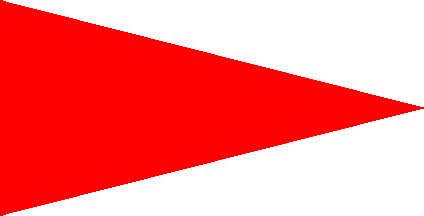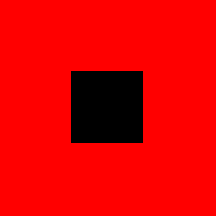Nautical Signal Flags
(Also Known as International Code Flags)
Summary: The International Code of Signals flags, and a
random signal flag message generator for you to practice with.
You may want to check out our
Nautical Flags Store
for signal flag kits, individual flags, and a variety of other
flag-related items.
|
Flag Etiquette Basics | How to Dress Ship | Signal Flags list area | Nautical Flags Practice area
Nautical Signal Flags (International Code Flags)
These days, you’ll most commonly see signal flags in use for
Dressing Ship or for weather warnings, but they are still in use throughout the world
for signaling between vessels and between a vessel and the shore. A good set should be carried by every well equipped boat.
There are a number of internationally recognized single-flag codes that you should be familiar with as well as some standard 2-flag codes that may prove handy to you.
There are also 3, 4, 5, 6, and 7-flag codes but they are of less urgency and
relate to things like compass headings, geographical location, etc. Generally, the more important/urgent the standard message that is to be conveyed, the fewer the flags designated to convey it.
All the standard one-flag messages are listed below in our
main signal flag list. Here are some two-flag messages:
| AC "I am abandoning ship" |
AN "I need a doctor" |
BR "I require a helicopter" |
CD "Immediate assistance is required" |
DV "I am drifting" |
EF "Mayday / SOS has been cancelled" |
FA "What is my position?" |
GW "Man Overboard" |
JL "You risk running aground" |
| LO "I am not in my correct position" |
NC "I require immediate assistance" |
PD "Your lights are not visible" |
PP "Keep well clear" |
QD "I am going ahead" |
QT "I am going astern" |
QQ "I require health clearance" |
QU "Anchoring is prohibited" |
QX "I request permission to anchor" |
| RU "I am maneuvering with difficulty" |
SO "You should stop instantly" |
UM "The harbour is closed to traffic" |
UP "Permission to enter the harbour is urgently requested" |
YU "I am going to communicate via International Code
of Signals" |
ZD "Please report me to Lloyds of London" |
ZL Your signal as been received but not understood" |
|
|
Back to the Top
Flag Etiquette Basics
Your "Country of Origin" or National flag should be flown at the stern of the
vessel, either on a flag staff or at the lower third of your mizzen sail
(generally from the mizzen's topping lift).
If you are in foreign water, a courtesy flag should also be flown from your
main mast's starboard spreader. Once out of foreign water, the courtesy
flag should be removed.
When entering a foreign port, before you have cleared through customs, the
"Q" (quarrantine) flag should also be flown on your starboard spreader, below
the country's courtesy flag. Once you've cleared customs, remove the "Q"
flag.
Back to the Top
Dressing Ship
On special occasions, you may have seen boats or ships adorned with many signal flags running from fore and aft from one end of the vessel to the other.
The proper way of doing this, if you’d like to do it on your boat, is to arrange the flags beginning from the waterline at the stern, to the top of your mast, over the bow, and to the waterline at the front of the vessel.
The order the flags appear in isn’t particularly important, but since there are twice as many numbered pennants as there are letter flags, it is good practice to arrange them in an alternating pattern with a letter flag followed by two pennants, followed again by a letter flag, etc.
Generally, only standard signal flags are used for dressing ship – club burgees, national and courtesy flags are not used in the dressing of the ship, but can still be flown from their usual places while the ship is dressed.
Dressing customarily begins at 0800 in the morning and stays dressed throughout the day until evening colours are flown.
Back to the Top
Nautical Signal Flags - Letters:
|

A
"Diver Down" |

B
"Dangerous Cargo" |

C
"Yes" |

D
"Keep Clear" |

E
"Altering Course to Starboard" |

F
"Disabled" |

G
"Want a Pilot" |

H
"Pilot on Board" |

I
"Altering Course to Port" |

J
"On Fire; Keep Clear" |
|

K
"Desire to Communicate" |

L
"Stop Instantly" |

M
"I am Stopped"
|

N
"No"
|

O
"Man Overboard" |

P
"About to Sail" |

Q
"Request Clearance" |

R
|

S
"Engines Going Astern" |

T
"Keep Clear" |
|

U
"You are running into Danger"
|

V
"Require Assistance"
|

W
"Require Medical Assistance" |

X
"Stop Your Intention"
|

Y
"Am Dragging Anchor"
|

Z
"Require a Tug"
|
|
|
|
|
Nautical Signal Flags - Numbers:
Nautical Signal Flags -
Substitutes, Answering,
and Weather:
|

Substitute 1 |

Substitute 2 |

Substitute 3 |

Substitute 4 |
|

Answering Pendant |
Back to the Top
Please check out our
Nautical Flags Store
for International Code Flag kits, individual flags, and a variety of other
flag-related items.
Nautical Signal Flags
PRACTICE
Here's a random phrase for you to decipher:
(scroll to the bottom for the translation)








Click for a fresh one to practice with!
The flags read: "Bear down"
Back to the Top
© Copyright 2008
David S. Malar and Angelika Jardine. All rights reserved.
Home -
www.selfmadesailor.com
Website Design and SEO (Search Engine Optimization) by VentureIT.ca
































